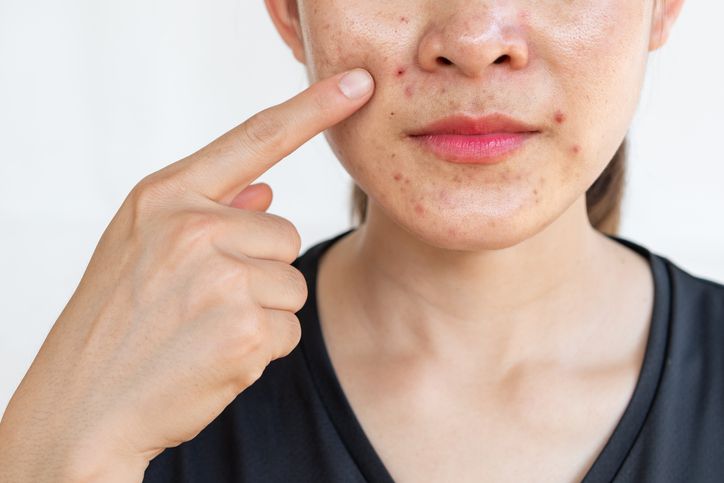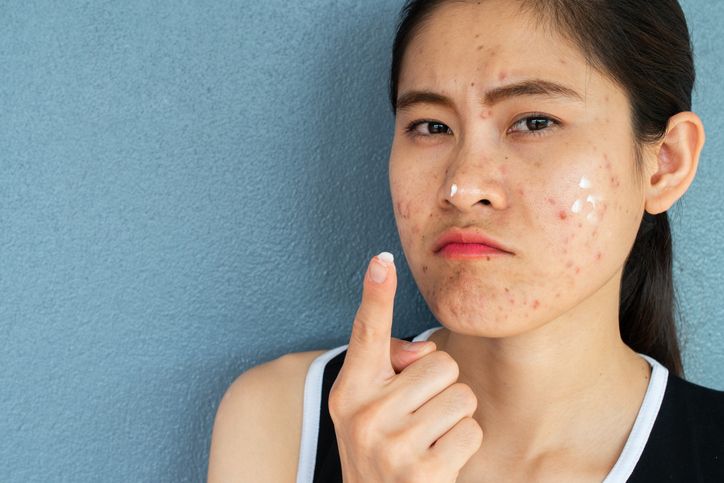- Home
- Trend
- Weight Loss Strategies
- Acne Tips
- Hair Health Information
- Blemish Removal Tips
- Acne Scar Removal Tips
- Muscle Building Techniques
- Intimate Care Tips
- Postpartum Intimate Care
- Eye Bags Wiki
- Tips for Face Slimming
- Secret of Permanent Hair Removal
- Breast Enlargement Tips
- Cure to Snoring
- Marionette Lines
- Skin-Tightening Secrets
Not only teenagers experience acne—adults in their middle age can also face breakouts. For people with acne-prone skin, the simplest wish is just to have clear skin without breakouts. Since everyone’s skin type and acne severity vary, and with today’s advanced technology, there’s bound to be a solution that works best for you.
This article summarizes globally recognized acne solutions, with a breakdown of their pros and cons to help readers fight acne and regain confidence. Some of these treatments can also serve as preventive measures. Even for severe acne, there’s no need to worry too much—just consult a dermatologist and follow their advice, and the problem can be improved.
Learn the 7 Main Causes and Triggers of Acne

1. Excess sebum production from sebaceous glands
2. Clogged and inflamed hair follicles (pores filled with oil, dirt, and bacteria)
3. Buildup of dead skin cells
4. Bacterial infection (Propionibacterium acnes)
5. Hormonal fluctuations
6. Poor lifestyle and dietary habits
7. Poor skin hygiene
10 Acne Solutions at a Glance – Pros and Cons

Solution 1: Acne Creams
These are one of the most common ways to treat acne. They’re easy to purchase and come in many varieties. Common ingredients include Retinoic Acid, Azelaic Acid, and Benzoyl Peroxide.
Pros: These ingredients reduce inflammation, dissolve dead skin, and kill bacteria—speeding up healing and relieving redness and stinging. Besides creams, acne-fighting ingredients also appear in face washes, gels, masks, toners, and lotions, giving users more options.
Cons: Results vary between individuals. Some creams may be too harsh and kill even beneficial surface bacteria, or cause rapid exfoliation, leading to dryness, redness, itching, irritation, and peeling. Use with caution, typically just once in the morning and evening. For severe acne, creams alone may not suffice and need to be combined with oral medication.
Solution 2: Tea Tree Oil Products
Tea tree oil is a natural essential oil extracted from plants, known for its strong antibacterial and anti-inflammatory properties.
Pros: Naturally combats mild to moderate acne by controlling oil and drying out blemishes.
Cons: Overuse can irritate or inflame the skin, causing redness and peeling. Use sparingly—dilute it and apply directly to pimples with a cotton swab. Allergic reactions are possible, so do a patch test before use.
Solution 3: Salicylic Acid Products
Salicylic acid helps unclog pores and remove buildup, reducing the formation of acne and blackheads.
Pros: Softens dead skin cells, prevents clogged pores, and improves skin texture by clearing dirt and excess oil from pores.
Cons: Like benzoyl peroxide, overuse can dry out the skin and trigger more oil production. It may increase redness and cause a burning sensation. Start with a patch test on the back of your hand before applying it to your face.
Solution 4: Acne Patches
Used as spot treatments, these patches reduce air exposure and help minimize pimples, though they're ineffective on large or cystic acne.
Pros: Some patches contain salicylic acid or benzoyl peroxide to shrink pimples. They also help conceal blemishes (available in nude or clear options) and prevent touching or external contamination.
Cons: Not effective for large, pus-filled, or cystic acne. Should not be used on broken skin or for prolonged periods, as they may hinder the skin’s natural healing.
Solution 5: Antibiotics
Antibiotics (topical and oral) are used to kill acne-causing bacteria and reduce inflammation. Tetracycline is a common oral option, working by modulating the immune system to reduce inflammation and prevent breakouts.
Pros: Effective for severe acne with fewer side effects compared to oral isotretinoin (A acid).
Cons: Not suitable for those with kidney issues. Requires a consistent course and should not be stopped abruptly. Tetracyclines may upset the stomach and cause sun sensitivity, so avoid dairy or iron-rich foods when taking them and apply sunscreen diligently.
Solution 6: Oral Isotretinoin (A Acid)
A derivative of Vitamin A, isotretinoin suppresses oil production, kills acne bacteria, prevents pore blockages, and speeds up skin renewal.
Pros: Effectively clears clogged pores, improves skin texture, and reduces pigmentation and acne scars. Suitable for treating cystic or nodular acne, especially if antibiotics fail.
Cons: May cause an initial breakout, dryness, sensitivity, and peeling. These side effects usually subside after a week. Must be taken under medical supervision due to potential liver impacts. Not suitable for pregnant or breastfeeding women due to risks to the fetus.
Solution 7: Steroids
Steroids reduce inflammation and suppress immune responses. Sometimes used for acne, eczema, or dermatitis.
Pros: Alleviates inflammation, redness, pain, and prevents scarring.
Cons: Prolonged use thins the skin, increases infection risk, may cause permanent hyperpigmentation, redness, and burning. Not recommended for teens due to hormonal impact. Sudden withdrawal can trigger acne rebound. Only use under dermatological supervision at low doses.
Solution 8: Chemical Peels (AHA Treatments)
A common salon treatment using organic acids to exfoliate dead skin cells, speed up acne healing, and shrink pores.
Pros: AHAs penetrate deeply, brighten skin tone, reduce scarring, stimulate collagen, and smooth skin.
Cons: Can be irritating. While salons use lower concentrations, at-home products may be stronger and harder to control—causing redness, stinging, or peeling. Post-treatment care and sun avoidance are essential.
Solution 9: Laser Treatments
A medical aesthetic approach using specific laser types to treat acne and rosacea-related redness.
Pros: Reduces inflammation, redness, pain, and scarring. Kills bacteria and stimulates collagen production. Lowers recurrence and tightens skin post-treatment.
Cons: Requires multiple sessions and delayed results. May cause temporary redness, dryness, or stinging. Without proper sun protection afterward, hyperpigmentation may occur. Not suitable for sensitive skin. Must be performed by experienced professionals. Moisturizing masks are recommended post-treatment.
Solution 10: Traditional Chinese Medicine (TCM)
TCM focuses on internal balance, viewing acne as a result of internal heat or toxin buildup. Acne locations are linked to specific internal organs.
Pros: Acupuncture, herbal remedies, and dietary therapy improve circulation and hormonal balance, reducing acne holistically.
Cons: Takes the longest to show results and varies by individual. It involves multiple methods like herbs, acupuncture, and massage, requiring strong patient compliance. More suited for mild or chronic acne, less effective for acute flare-ups.
免費體驗
Acne Treatment
1 Minute Self-Registration
Date should not be before minimal date
8 Healthy Habits to Reduce Acne Formation
Besides direct treatments, lifestyle changes play a key role in preventing acne. Addressing the root causes and maintaining consistent care can significantly improve acne-prone skin.
1. Eat a clean diet
Avoid spicy, sugary, or oily foods and potential allergens like dairy, seafood, and eggs. Focus on greens, fruits, whole grains, lean proteins, and drink plenty of water.
2. Deep cleansing
Use gentle cleansers and techniques to remove bacteria and dirt without over-washing (no more than 2–3 times daily) to maintain the skin barrier.
3. Choose the right products
Use non-comedogenic, fragrance-free, and alcohol-free skincare and makeup. Avoid thick foundations that may clog p
4. Manage stress
Stress and negative emotions affect hormones and metabolism. Try meditation, yoga, deep breathing, or exercise to relax.
5. Get enough sleep
Aim for 7–8 hours per night. Poor sleep can trigger acne and emotional imbalance.
6. Exercise regularly
Sweating helps detoxify and boosts circulation, improving both skin and overall health. Exercise can also aid in weight loss and acne prevention.
7. Quit Smoking and Drinking
Both tobacco and alcohol are irritants that can worsen skin infections and acne problems. If you want to prevent recurring breakouts, it’s best to quit both—plus, it’s a great way to boost your overall health.
8. Consult a Dermatologist
If your acne keeps coming back or getting worse, and nothing you've tried seems to work, it's time to consult a dermatologist or skincare specialist. They can help identify the most effective treatment plan so you can clear up your skin quickly.
The Most Effective Acne Solution Is Here! Try Perfect Medical’s Acne Treatment Now!
The acne solutions mentioned in this article each have their pros and cons. But if you’re looking for a highly effective way to eliminate acne and acne scars, don’t miss this aesthetic medical treatment!
The Perfect Medical Acne Treatment is like a vacuum cleaner for your pores. It uses dual-directional spiral suction drainage technology to gently remove 30–35mm of dead skin, dirt, and sebum from the surface via vacuum dermabrasion. This helps dissolve blackheads, unclog pores, and reduce inflammation, ultimately minimizing acne and breakouts.
The treatment also infuses medical-grade serums deep into the skin to reduce excess oil production, helping to rebalance oil and moisture levels. Additionally, it stimulates collagen production to improve skin elasticity and radiance, tighten enlarged pores, accelerate healing of existing acne, and reduce the likelihood of future breakouts.
It’s a painless, non-invasive, and safe procedure with no wounds or downtime. No matter what’s causing your acne or what your skin type is, this treatment can help. Interested? Click the link below to sign up and enjoy a free trial session!
Experience Now: Perfect Medical Acne Treatment免費體驗
Acne Treatment
1 Minute Self-Registration
Date should not be before minimal date
FAQ

How can I tell if my acne is caused by digestive issues or diet?
From a Traditional Chinese Medicine perspective, regularly consuming irritants like spicy food, alcohol, or caffeine can disrupt digestive health and lead to internal heat buildup. If this heat can't be eliminated due to constipation, it may manifest as acne. Digestive-related acne typically appears around the chin and mouth, and may sometimes look more like clogged pores than inflamed pimples. If you often break out in these areas, it’s your body’s way of telling you to avoid spicy foods. Switching to a light, clean diet can help improve your skin health.
Why do women with long hair often get acne on their backs, and how can it be prevented?
It’s not just long hair—tight or rough-textured clothing can also cause back acne due to constant friction, which can irritate and inflame the skin. Long hair works similarly by rubbing against the back. Another often-overlooked factor is hair care products like shampoo and conditioner, which may contain ingredients like silicone that clog pores. To prevent this, try switching to less greasy hair products and tie your hair up after washing to avoid contact with your back—especially in hot weather.
I exfoliate regularly to prevent acne, so why am I still breaking out?
Exfoliating helps remove dead skin and prevent clogged pores, so it’s generally effective in reducing acne. However, over-exfoliating can strip away too much oil, damage the skin barrier, and actually lead to more breakouts. That’s because exfoliation is a form of stimulation, and excessive use creates an environment where bacteria can thrive. Use exfoliants with fine particles and apply gently to avoid making things worse.
What foods should I avoid to reduce acne?
Treating acne requires a holistic approach, including dietary changes. To prevent breakouts, avoid fried foods, spicy dishes, sweets, dairy products, red meat, alcohol, and caffeine. Instead, eat a lighter diet rich in fresh fruits, vegetables, and high-fiber foods to promote digestion and detoxification, reducing acne from the inside out.
Isn’t sunlight supposed to kill bacteria? Why does too much sun cause acne?
Sunlight does have antibacterial properties, but excessive exposure kills both harmful and beneficial bacteria. Too much sun dries out the skin, triggers overproduction of oil, and can cause inflammation and redness. It also stimulates melanin production, making acne scars more noticeable. If you already have severe acne, avoid sun exposure. If you must be outside, stick to early morning (7–10 AM) or late afternoon (5–6 PM) when the sun is less intense.









